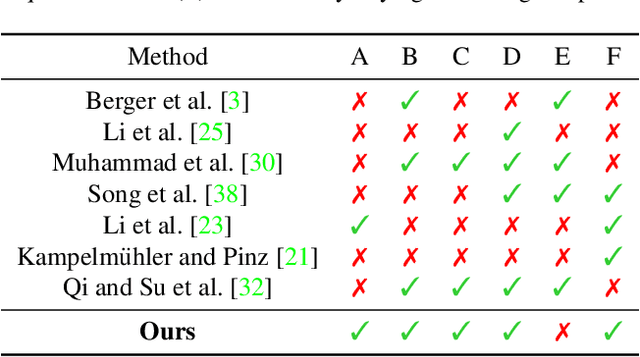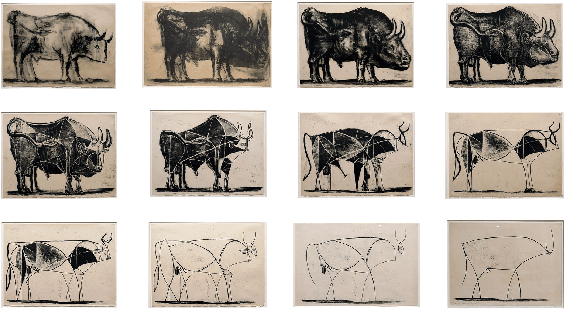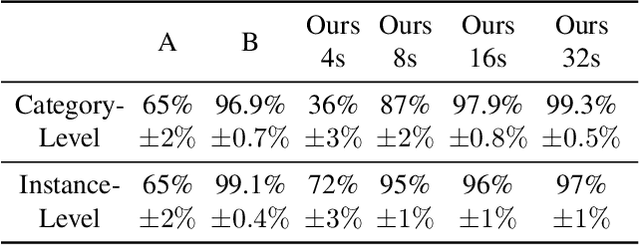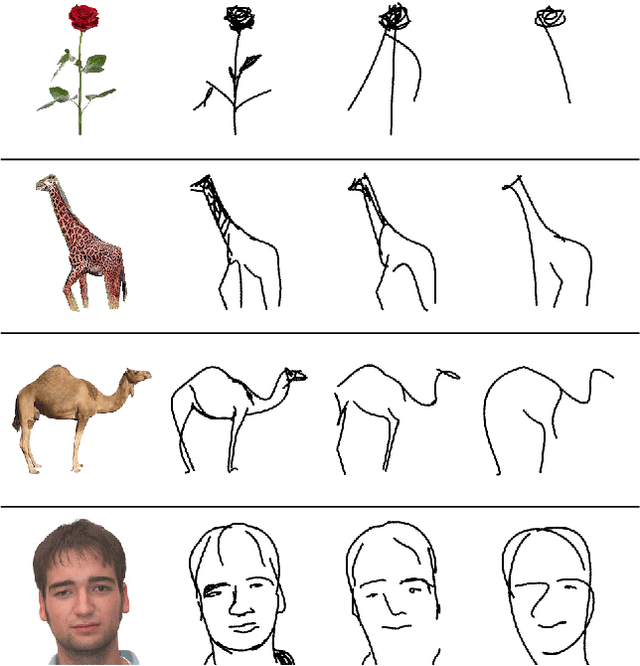Amit Haim Bermano
Express4D: Expressive, Friendly, and Extensible 4D Facial Motion Generation Benchmark
Aug 17, 2025Abstract:Dynamic facial expression generation from natural language is a crucial task in Computer Graphics, with applications in Animation, Virtual Avatars, and Human-Computer Interaction. However, current generative models suffer from datasets that are either speech-driven or limited to coarse emotion labels, lacking the nuanced, expressive descriptions needed for fine-grained control, and were captured using elaborate and expensive equipment. We hence present a new dataset of facial motion sequences featuring nuanced performances and semantic annotation. The data is easily collected using commodity equipment and LLM-generated natural language instructions, in the popular ARKit blendshape format. This provides riggable motion, rich with expressive performances and labels. We accordingly train two baseline models, and evaluate their performance for future benchmarking. Using our Express4D dataset, the trained models can learn meaningful text-to-expression motion generation and capture the many-to-many mapping of the two modalities. The dataset, code, and video examples are available on our webpage: https://jaron1990.github.io/Express4D/
Cross-domain Compositing with Pretrained Diffusion Models
Feb 20, 2023Abstract:Diffusion models have enabled high-quality, conditional image editing capabilities. We propose to expand their arsenal, and demonstrate that off-the-shelf diffusion models can be used for a wide range of cross-domain compositing tasks. Among numerous others, these include image blending, object immersion, texture-replacement and even CG2Real translation or stylization. We employ a localized, iterative refinement scheme which infuses the injected objects with contextual information derived from the background scene, and enables control over the degree and types of changes the object may undergo. We conduct a range of qualitative and quantitative comparisons to prior work, and exhibit that our method produces higher quality and realistic results without requiring any annotations or training. Finally, we demonstrate how our method may be used for data augmentation of downstream tasks.
CLIPasso: Semantically-Aware Object Sketching
Feb 11, 2022



Abstract:Abstraction is at the heart of sketching due to the simple and minimal nature of line drawings. Abstraction entails identifying the essential visual properties of an object or scene, which requires semantic understanding and prior knowledge of high-level concepts. Abstract depictions are therefore challenging for artists, and even more so for machines. We present an object sketching method that can achieve different levels of abstraction, guided by geometric and semantic simplifications. While sketch generation methods often rely on explicit sketch datasets for training, we utilize the remarkable ability of CLIP (Contrastive-Language-Image-Pretraining) to distill semantic concepts from sketches and images alike. We define a sketch as a set of B\'ezier curves and use a differentiable rasterizer to optimize the parameters of the curves directly with respect to a CLIP-based perceptual loss. The abstraction degree is controlled by varying the number of strokes. The generated sketches demonstrate multiple levels of abstraction while maintaining recognizability, underlying structure, and essential visual components of the subject drawn.
 Add to Chrome
Add to Chrome Add to Firefox
Add to Firefox Add to Edge
Add to Edge